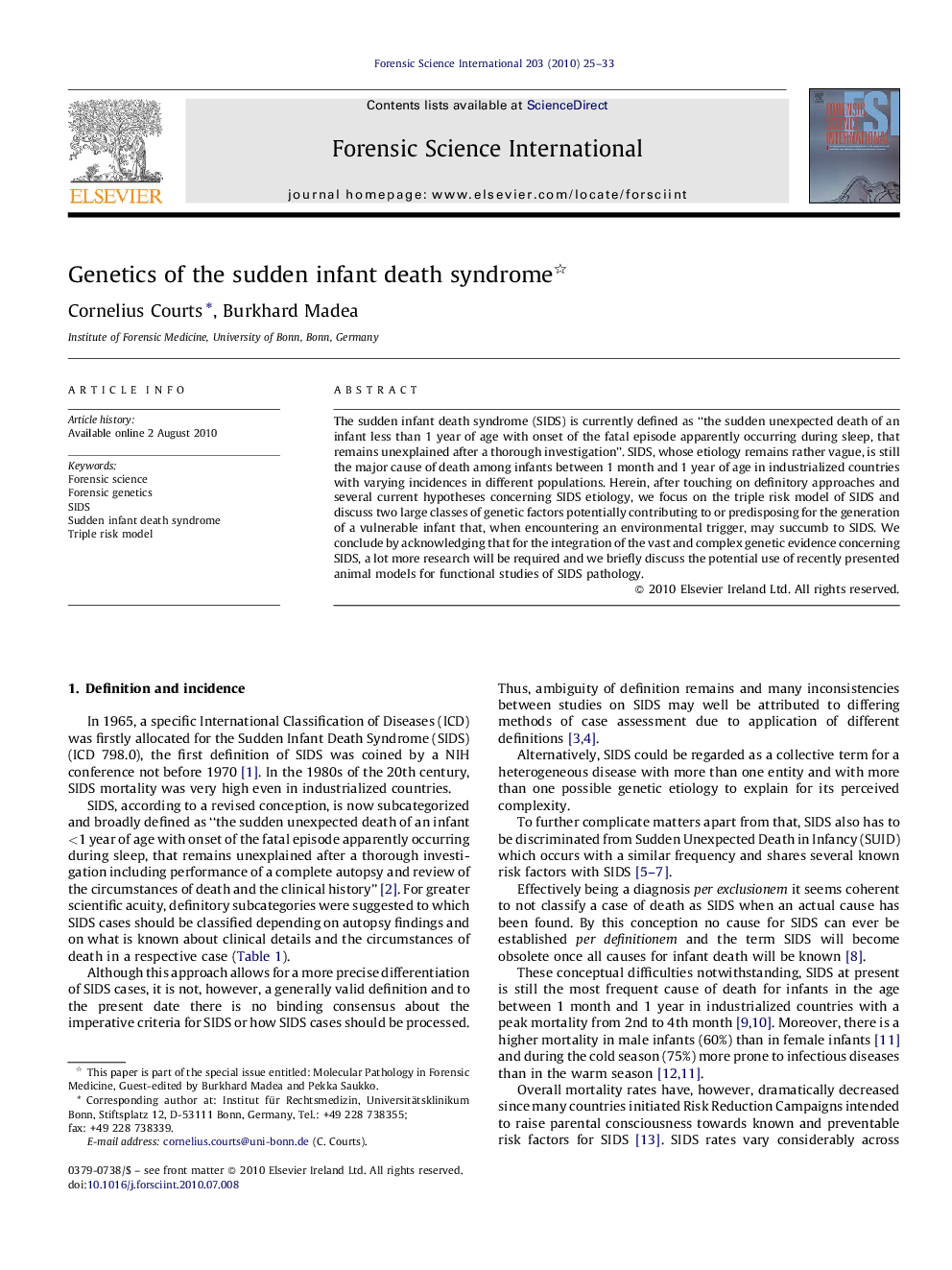| Article ID | Journal | Published Year | Pages | File Type |
|---|---|---|---|---|
| 96727 | Forensic Science International | 2010 | 9 Pages |
The sudden infant death syndrome (SIDS) is currently defined as “the sudden unexpected death of an infant less than 1 year of age with onset of the fatal episode apparently occurring during sleep, that remains unexplained after a thorough investigation”. SIDS, whose etiology remains rather vague, is still the major cause of death among infants between 1 month and 1 year of age in industrialized countries with varying incidences in different populations. Herein, after touching on definitory approaches and several current hypotheses concerning SIDS etiology, we focus on the triple risk model of SIDS and discuss two large classes of genetic factors potentially contributing to or predisposing for the generation of a vulnerable infant that, when encountering an environmental trigger, may succumb to SIDS. We conclude by acknowledging that for the integration of the vast and complex genetic evidence concerning SIDS, a lot more research will be required and we briefly discuss the potential use of recently presented animal models for functional studies of SIDS pathology.
